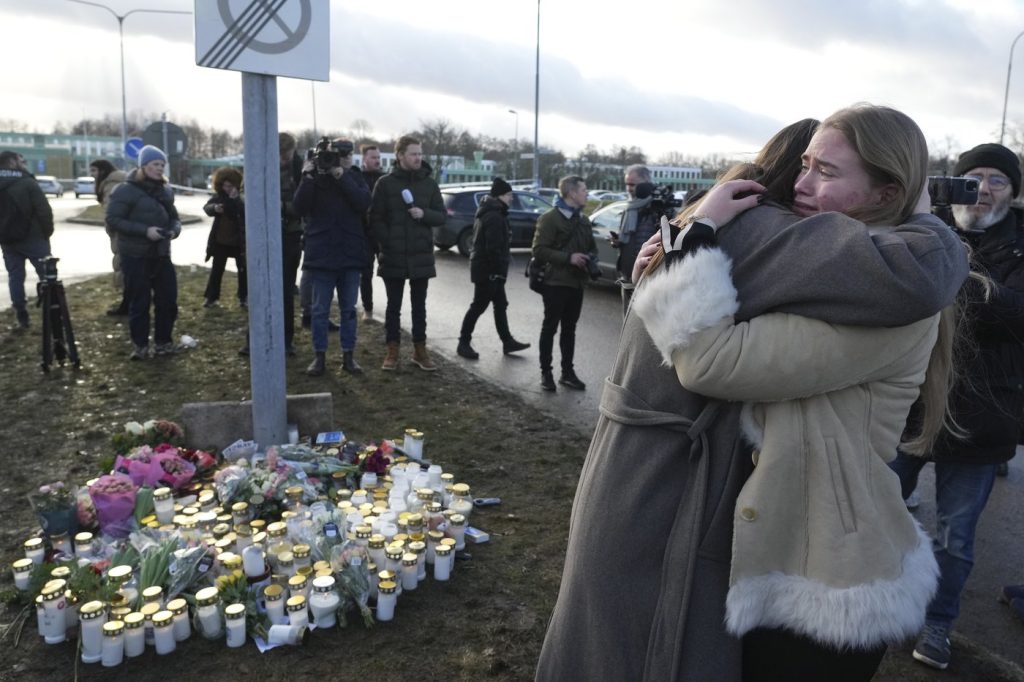OREBRO, Sweden (AP) — On Thursday, Swedish police confirmed that the shooter responsible for the worst mass shooting in the country's history had a connection to the adult education center where he opened fire, resulting in the deaths of 10 individuals. The violent incident took place on Tuesday at Campus Risbergska, an educational facility located in Orebro, approximately 200 kilometers west of Stockholm.
The gunman, whose identity has not yet been revealed, was believed to have been a former student of the adult education center. After committing the atrocity, authorities discovered his body at the scene, accompanied by a significant amount of unused ammunition. Reports indicate that he possessed licenses for four firearms, three of which were located next to him after the incident.
In addition to the fatalities, at least five individuals were seriously injured during the shooting. These victims included three women and two men, all of whom required surgery at Orebro University Hospital. By Wednesday, their conditions were reported to be serious but stable, while another woman received treatment for minor injuries. All the victims were identified as being over the age of 18.
Swedish authorities reported that there were no prior warnings regarding the attack, and it's believed that the shooter acted alone. Currently, there is no indication of any connection to terrorism. The shocking nature of the event has left the nation grappling with the reality of such violence occurring on its soil, particularly given that gun violence in educational institutions is quite rare in Sweden.
The incident has deeply affected the local community, prompting mourners to gather at makeshift memorials close to the shooting site. Malin Hilmberg, a local resident, expressed her disbelief, stating, "Not in this place... It’s your hometown, and so many lives destroyed. It’s hard to find words." Swedish officials, including Justice Minister Gunnar Strömmer, described the act as one that "shakes our entire society to its core." In response to the tragedy, King Carl XVI Gustaf and Prime Minister Ulf Kristersson ordered flags to be flown at half-staff at both the Royal Palace and government buildings.
The school, known for providing various adult educational programs, including language courses for immigrants and vocational training, was the scene of chaos as the shooting unfolded. Eyewitnesses recounted the harrowing experience, with survivors desperately seeking cover amid the gunfire. Hellen Werme, a 35-year-old survivor, recounted, "Those were the worst hours of my life. I did not know if I would get shot there and then, or in 10 minutes. You simply waited." The aftermath left the community in shock and mourning.
The police have launched an investigation into the shooting, and efforts are underway to identify the deceased victims. Local police chief Roberto Eid Forest reported that several officers were treated for smoke inhalation during their response, though no fire was present at the scene, leading to questions regarding the source of the smoke.
In Sweden, the legal framework for gun ownership is quite stringent. Applicants must obtain a weapon license and demonstrate a legitimate purpose for their firearms, such as hunting or competitive shooting. Additionally, all firearms must be stored in secure cabinets, and there are stringent regulations regarding the issuance of permits for fully automatic or one-handed weapons.
The tragic events in Orebro highlight not only the personal loss for the families involved but also the broader implications for Swedish society's perception of safety within its educational institutions.










